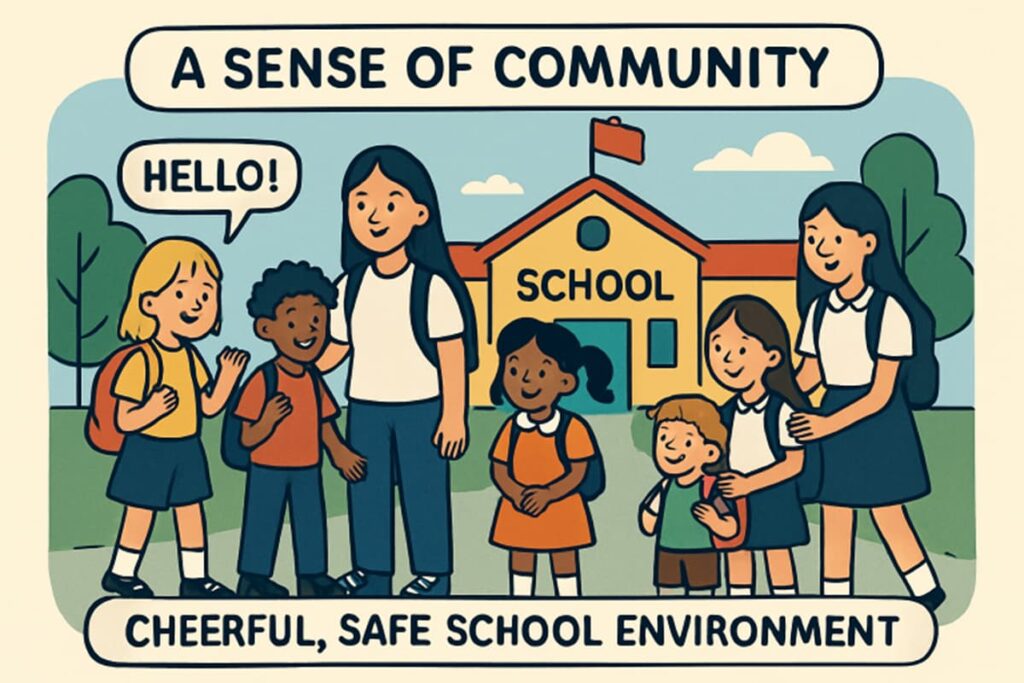Table of Contents
- Introduction
- Continuity in Learning Environment
- Preservation of Childhood
- Leadership Opportunities
- Academic Advantages
- Enhanced Social-Emotional Development
- Parental Involvement
- Conclusion
Introduction
Choosing the right educational pathway is one of the most critical decisions for families, impacting a child’s academic achievement and personal development for years to come. Among the various options available, the private PreK–8 school model is gaining notable attention for its unique structure and ability to nurture children from their earliest school experiences through the threshold of adolescence. This educational design keeps students within the same institution from pre-kindergarten through eighth grade, providing a stable and supportive environment at every stage of their formative years.
Parents are increasingly recognizing the long-term value of a single, nurturing learning community that follows children as they grow and mature. A private PreK–8 school not only fosters continuity but also emphasizes holistic development by focusing on the academic, emotional, and social needs unique to each age group. Let’s explore why this model is becoming a preferred choice for families seeking the best for their children.
Continuity in Learning Environment
One of the cornerstone advantages of the PreK–8 school model is the unparalleled continuity it offers. Unlike the traditional system, where children often transition from elementary to middle school frequently accompanied by new teachers, unfamiliar peers, and different expectations a PreK–8 setting enables students to remain within a familiar environment throughout their critical developmental years. This extension of time in the same school significantly reduces transitional stress and offers a foundation of security and belonging. Students can build deeper, more meaningful relationships with their classmates and educators a dynamic that is shown to bolster feelings of safety and academic engagement.
Preservation of Childhood
In many traditional educational systems, children are exposed to older student influences at an early age, often before they are emotionally equipped to process more mature social dynamics. By contrast, the PreK–8 structure preserves the innocence of childhood, allowing youngsters to develop at a pace that’s right for their age. They participate in activities, lessons, and school events tailored precisely to their developmental needs, minimizing premature pressures and encouraging natural growth.
Many education experts believe that this age-appropriate setting shields children from the rapid social acceleration commonly observed when younger and much older students share the same building. The PreK–8 model reduces the risk of “growing up too quickly,” offering a safe space for students to learn, explore, and establish a strong sense of self before entering high school.
Leadership Opportunities
The unique structure of PreK–8 schools also provides robust leadership opportunities for older students. As eighth graders become the most senior members of the student population, they are invited to serve as role models and mentors for younger peers. Whether participating in student government, leading community projects, or organizing school-wide events, these experiences are invaluable for developing confidence, responsibility, and interpersonal skills.
Research published in The Children’s School suggests that these leadership roles help prepare students for the academic and social challenges of high school, fostering maturity and a sense of stewardship within the school community.
Academic Advantages
Another benefit of the PreK–8 model is the academic continuity it affords. Teachers have the opportunity to collaborate across grade levels, align teaching strategies, and closely monitor student progress over an extended period. This results in smooth curricular transitions, reduces disruptions, and improves retention of foundational concepts.
The strong teacher-student relationships that develop over time enable early identification and intervention when challenges arise, ensuring that each child can meet their learning milestones. According to a study highlighted by K12 Dive, students in PreK–8 schools often exhibit greater academic confidence and perform better than their peers in traditional middle school settings, suggesting that continuity in instruction and expectations fosters sustained academic growth.
Enhanced Social-Emotional Development
The importance of social and emotional development cannot be understated, especially during the formative years. Long-term relationships with peers and educators help children feel seen, valued, and supported throughout their school journey. This environment fosters a genuine sense of community, where students learn conflict resolution, empathy, and collaboration within a familiar support network.
Because teachers get to know students and families over many years, they can address each child’s unique personality and needs, adjusting guidance and support tailored to individual growth. This empathetic and stable community helps nurture well-rounded, emotionally resilient young people who are better equipped to thrive in high school and beyond.
Parental Involvement
When a child attends a PreK–8 school, families benefit from extended, uninterrupted collaboration with the school. Parents can develop stronger partnerships with teachers, administrators, and other families, ensuring better communication and ongoing engagement in their child’s learning experience. This close-knit community also makes it easier for parents to participate in school events and volunteer opportunities, thereby elevating their involvement in the educational process and reinforcing the home-school connection that is vital for student success.
Conclusion
The PreK–8 school model is designed for stability, nurturing, and comprehensive growth, setting the stage for both academic achievement and personal well-being. By prioritizing a consistent, developmentally appropriate environment with ample leadership opportunities and strong community ties, this approach can be a transformative option for families. When evaluating schools, consider a structure that grows with your child, providing security and support at every stage; it just might be the key to unlocking their fullest potential.
Also Read-How Electronic Health Records Reduce Medical Errors







